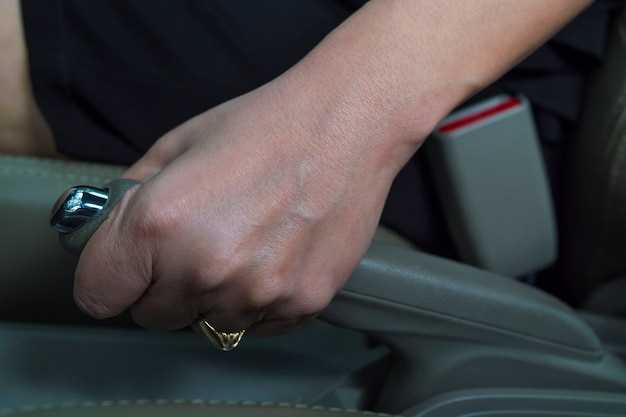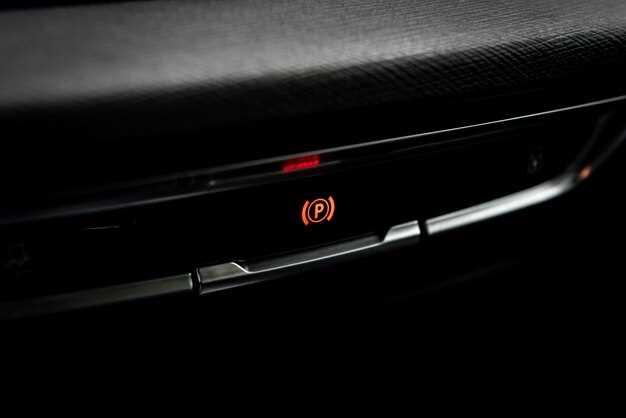
The ABS (Anti-lock Braking System) is a crucial component in BMW vehicles, designed to enhance safety and control during braking. When the ABS warning light illuminates on your dashboard, it indicates that there is a malfunction within the system, which can compromise your vehicle’s braking performance. Addressing this issue promptly is essential not only for your safety but also for the overall health of your BMW.
Understanding the common causes of the ABS warning light activation can simplify the troubleshooting process. Factors such as faulty sensors, low brake fluid levels, or issues with the ABS module may trigger the warning. By systematically diagnosing these components, you can identify the root of the problem and take appropriate measures to resolve it, restoring the functionality of your BMW’s ABS system.
This guide aims to provide you with a clear and concise approach to troubleshooting the ABS warning light in your BMW. We will explore various diagnostic steps, explain how to check critical components, and discuss potential solutions to help you get back on the road with confidence. With the right knowledge and tools, fixing ABS-related issues can be a manageable task, ensuring your vehicle remains safe and reliable.
Identifying Common ABS Warning Light Issues in BMW Vehicles

The ABS (Anti-lock Braking System) warning light on a BMW dashboard can indicate various issues within the braking system. Understanding these common issues is crucial for timely repair and ensuring safe vehicle operation.
One prevalent problem is a malfunctioning ABS sensor. These sensors monitor the wheel speed and relay that information to the ABS computer. If a sensor fails or becomes dirty, it can trigger the warning light, indicating a potential issue with the system.
Another frequent cause is low brake fluid levels. The ABS relies on hydraulic pressure for optimal performance, and insufficient brake fluid can compromise this pressure, leading to the ABS light illuminating. Regularly checking and maintaining proper fluid levels is essential for overall system functionality.
Wiring problems or damaged connectors can also affect the ABS system. Corroded or broken connections can cause interruptions in the signal transmission from the sensors to the control module, resulting in the warning light activation. It is vital to inspect all wiring associated with the ABS when troubleshooting the warning light.
Additionally, issues with the ABS control module itself may arise. The module is responsible for processing data from the sensors and controlling the ABS function. If it develops faults, it can trigger the warning light and affect braking efficiency. Diagnosing control module issues often requires specialized equipment for accurate assessment.
Lastly, a stuck or malfunctioning wheel speed sensor may contribute to the ABS warning light’s activation. These sensors are crucial for the system’s operation, and any failure can directly impact braking performance. Regular diagnostics can help identify and address these sensor issues promptly.
In summary, identifying common ABS warning light issues in BMW vehicles involves checking the sensors, brake fluid levels, wiring, control module, and wheel speed sensors. Addressing these factors early can prevent more significant problems and enhance the overall safety and reliability of your vehicle’s braking system.
Step-by-Step Procedures for Diagnosing BMW ABS System Problems
Diagnosing issues with the BMW ABS system requires a systematic approach to identify and rectify the problem effectively. Follow these steps to troubleshoot efficiently.
Step 1: Gather Tools and Equipment
Prepare the necessary tools, which may include a multimeter, OBD-II scanner, and a diagnostic manual specific to your BMW model. Ensure you have safety gear and a clean workspace.
Step 2: Check for Diagnostic Trouble Codes (DTCs)
Using an OBD-II scanner, connect it to the vehicle’s diagnostic port. Retrieve any DTCs related to the ABS system. Make a note of these codes, as they indicate specific malfunctions within the system.
Step 3: Visual Inspection
Conduct a thorough visual inspection of the ABS components, including the sensors, wiring, and connectors. Look for damaged wires, loose connections, or any signs of wear and tear that could cause a malfunction.
Step 4: Test ABS Sensors
With a multimeter, test the resistance of each ABS wheel sensor. Compare the readings against the specifications provided in the BMW service manual. Any discrepancies may indicate a faulty sensor needing repair.
Step 5: Inspect the ABS Control Module
Check the ABS control module for any signs of damage or corrosion. Use the OBD-II scanner to scan for specific error codes related to the module. If necessary, reprogram or replace the module following the manufacturer’s guidelines.
Step 6: Examine the Hydraulic Unit
Assess the hydraulic control unit for leaks or blockages. Ensure that brake fluid levels are adequate, as low fluid can affect the ABS operation. Flush and refill the brake fluid if contaminated or low.
Step 7: Conduct Test Drives
After making necessary repairs, conduct test drives to monitor the functionality of the ABS system. Pay attention to the dashboard for any warning lights and evaluate the braking performance in various conditions.
Step 8: Confirm Repair Success
After the test drives, re-scan the ABS system with the OBD-II scanner to ensure no error codes are present. If issues persist, further investigation into each step may be required for complete resolution. Ensure all repairs comply with BMW standards.
Cost-Effective Solutions for Resolving ABS Warning Light Alerts

When the ABS warning light illuminates on your BMW dashboard, it signals an issue within the anti-lock braking system that requires immediate attention. Addressing this problem doesn’t always have to involve expensive repairs. Here are some cost-effective solutions to consider for resolving ABS warning light alerts.
First, perform a thorough visual inspection of the ABS components. Check for damaged wiring, loose connectors, or any signs of corrosion around the wheel speed sensors. Often, a simple cleaning or re-attachment of these connections can restore functionality without the need for extensive repairs.
Next, using an OBD-II scanner to read diagnostic trouble codes (DTCs) can help pinpoint the specific issue triggering the ABS light. This approach is relatively inexpensive, especially if you choose to borrow or rent a scanner instead of visiting a dealership. By identifying the problem accurately, you can avoid unnecessary parts replacement.
If you discover that the wheel speed sensors are the issue, consider replacing them yourself if you have the necessary tools and skills. Aftermarket sensors are often more affordable than OEM parts, providing a budget-friendly solution while maintaining system integrity.
Additionally, keep an eye on the brake fluid level. Low brake fluid can trigger the ABS warning light as well. Regularly checking and topping off brake fluid can prevent further complications and potentially save on more serious repairs.
Finally, maintaining a regular schedule of brake system inspections can be a proactive strategy to avoid ABS issues altogether. Make sure to have your brake pads, rotors, and fluid checked regularly, ensuring the entire braking system is functioning optimally.
By taking these steps, you can address ABS warning light alerts effectively and economically, keeping your BMW’s braking system in top-notch condition.



